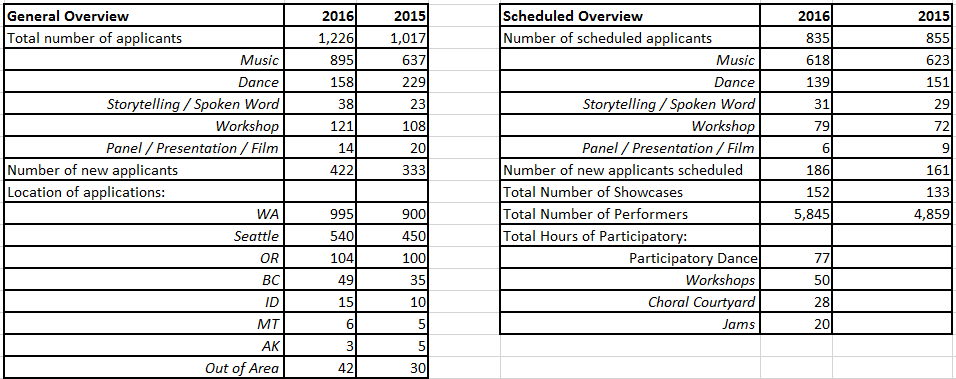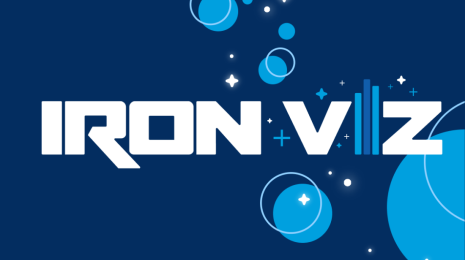Engaging My Community: Northwest Folklife
How do you make new year's resolutions stick? According to some sources, the secret is to keep it a secret. Had I heeded that advice, I wouldn't have posted my #DataResolutions on our blog and on Twitter. Now that my resolution is out of the bag, I'm here to follow through. Let me tell you about one of the projects I'm doing with Northwest Folklife and show you how to engage community organizations in your area, too.
Ready, Set, Go!
The hardest part of volunteering as a data analyst is finding organizations who are in a position to accept your help. Look for opportunities to connect with program administrators at local technology conferences, at meetup groups, and through referrals from friends.
I met Northwest Folklife's Development Director Sheila Siden at the Seattle Interactive Conference, but it wasn't for several months that we were able to connect in person.
Northwest Folklife creates opportunities for the community to celebrate and participate in the evolving culture of the Pacific Northwest. The organization has been in existence since 1971, and is most recognized for the Northwest Folklife Festival, a four-day event at the Seattle Center that hosts musicians, dancers, speakers, and the community in participatory art.
Listen Up!
When you find an organization who's willing to talk to you, do something unexpected: Listen. Ask questions about their challenges and about their audiences. Suss out their comfort level with data, and follow their lead. When Sheila and I first met, we dove head-first into the design of an annual report because that was the kind of data she had.

And then we started talking about the history of Northwest Folklife and the picture changed dramatically.
Data? What Data?
Pay attention to what your contact is saying, but listen for data opportunities, too. Help the organization recognize data opportunities it doesn't know it has. In the case of Northwest Folklife, the big data opportunity was the festival schedule. Jam-packed with names, dates, locations, categories, links, and numbers, the schedule was a data set they'd taken for granted for decades. I knew this was data we could use, but I worried about the format. Each year, the organization prints a few hundred thousand guides for distribution around the festival, and I feared I'd be data cleaning from PDF files for days. Luckily, they'd migrated their schedule to a scheduling system that had a perfectly formatted, normalized data export feature. That's where I started.

Viz, React, Revise
Sometimes the best way to figure out what's needed is by recognizing what's not needed. With Northwest Folklife, I created several rapid prototype vizzes to explore the schedule data, and without any polishing at all, I gave them to Sheila.
I knew there would be design changes, sure. But giving her vizzes to play with allowed her to better understand Tableau's potential and it gave us a common visual vocabulary. Her reaction was instant, and she had ideas she hadn't even considered before.
Iterate, Iterate, Iterate
I brought those ideas home and prototyped more. And slowly we've started to get a little clearer about what Northwest Folklife can actually use. Our project's not done yet. In fact, the more we work together, the more opportunities we see.
So if you've got a hankering to change your world, keep these points in mind. As with any relationship, good results take commitment. If what you can offer is a one-time assist, set expectations clearly and expect to shop your skills around a bit. On the other hand, if you're willing to invest time, your journey might have unexpected turns, but you might uncover opportunities for impact long after you're gone.








